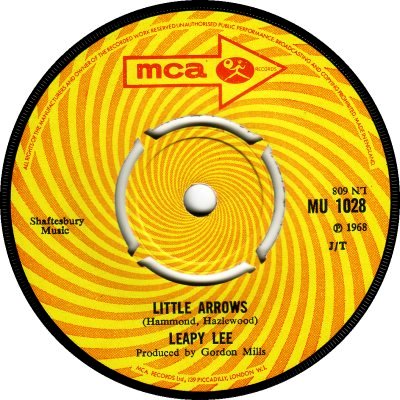
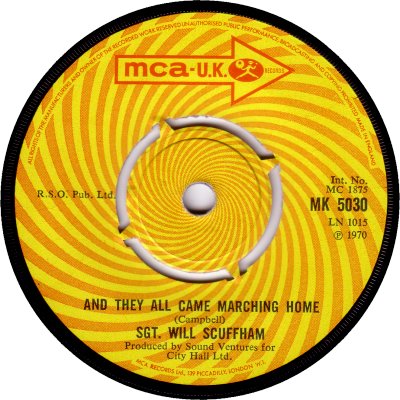

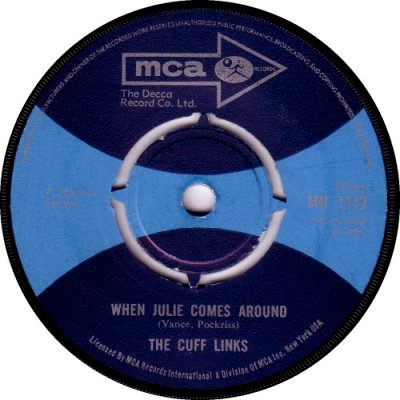
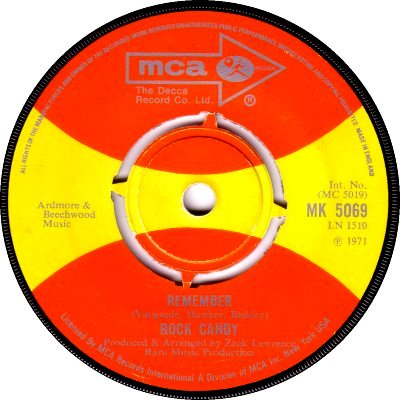
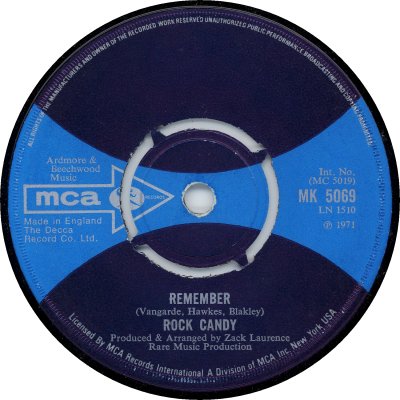
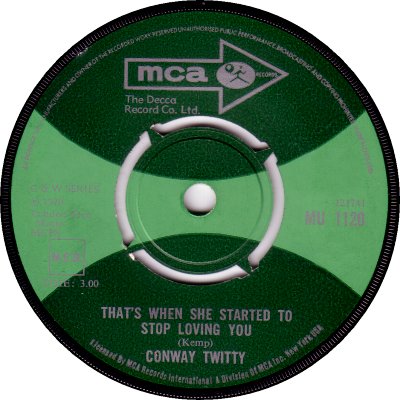
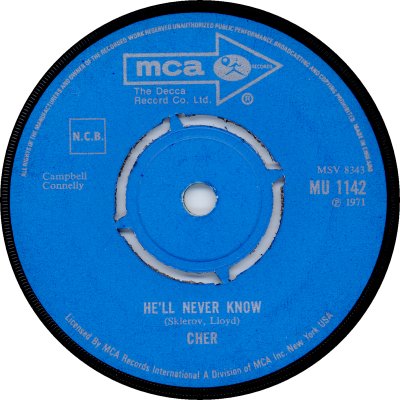
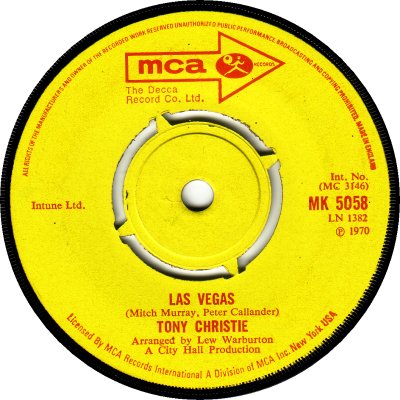
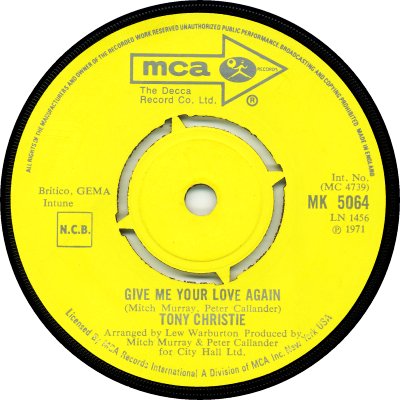

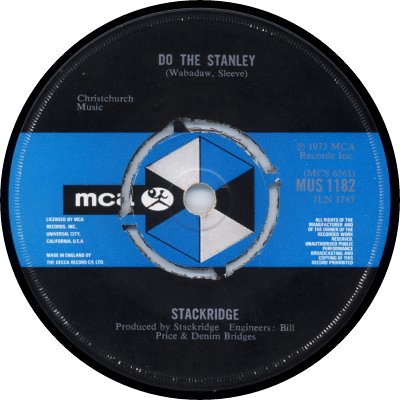
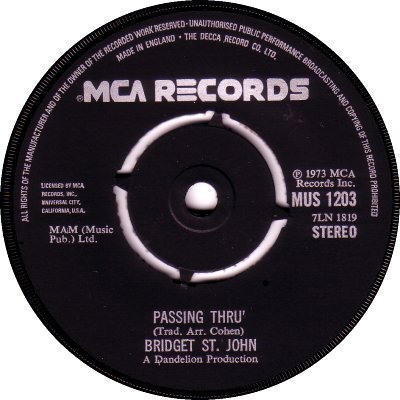
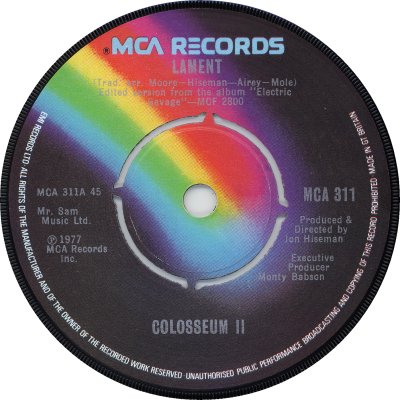
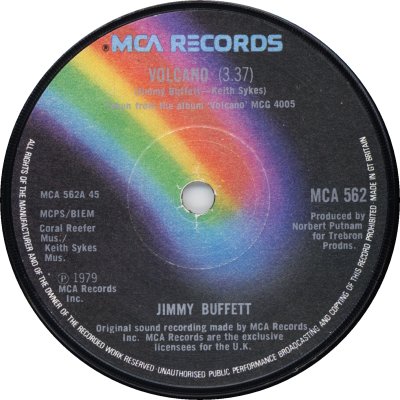
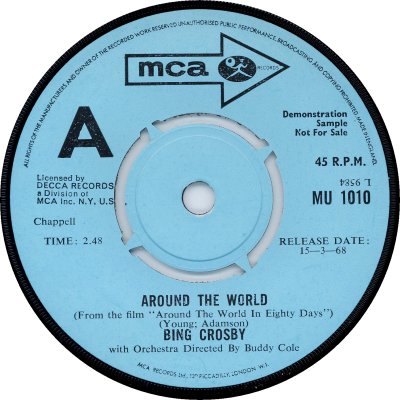
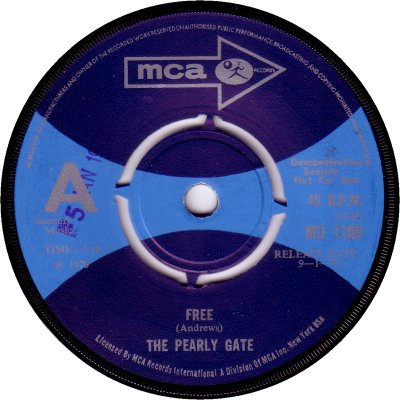
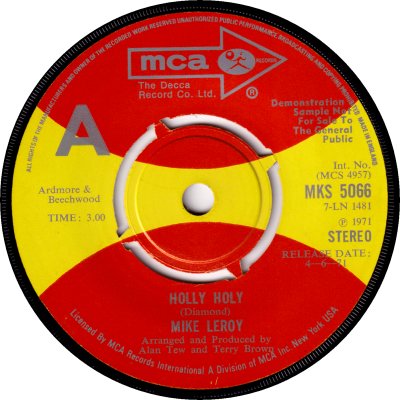
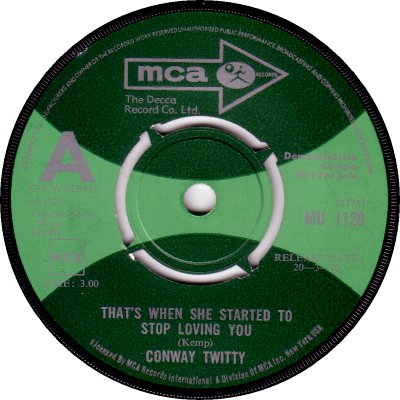
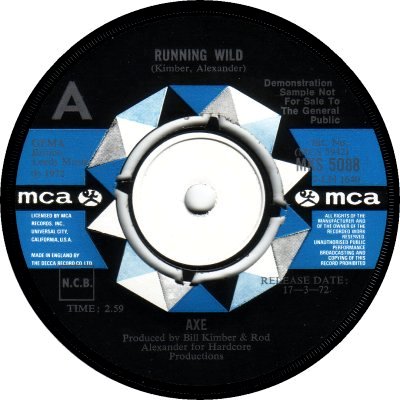
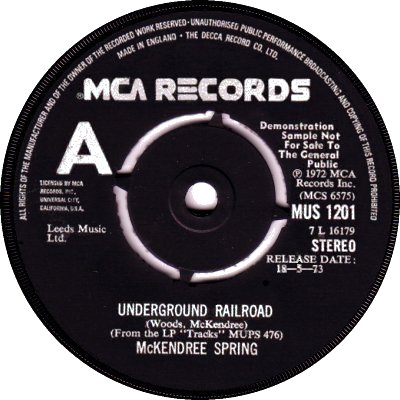
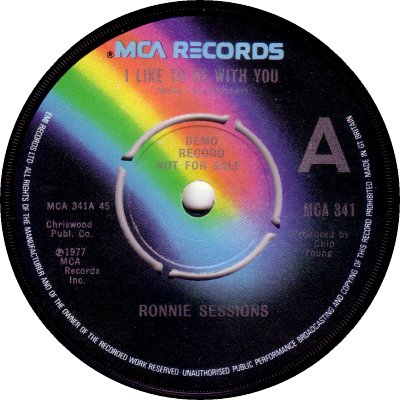
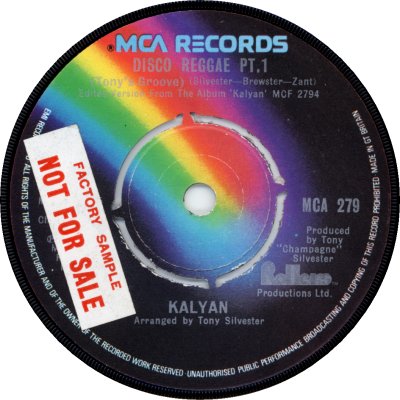
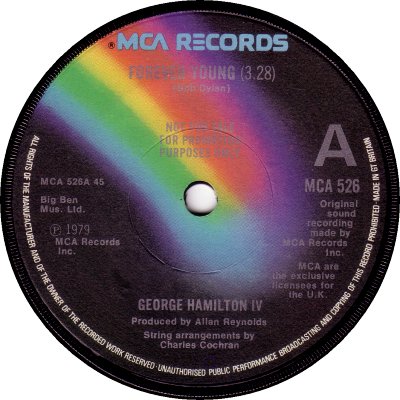
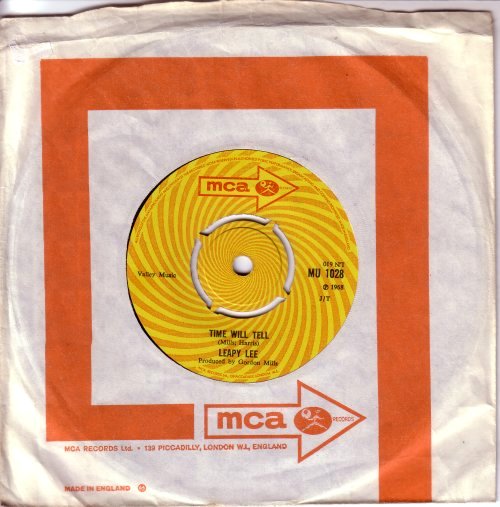
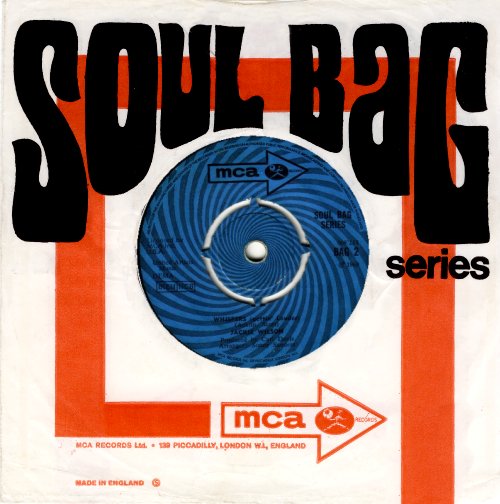
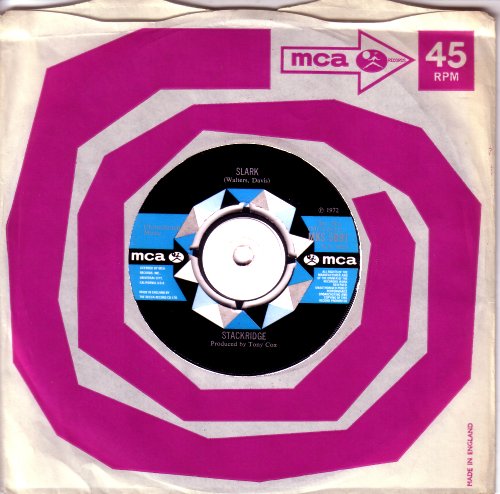
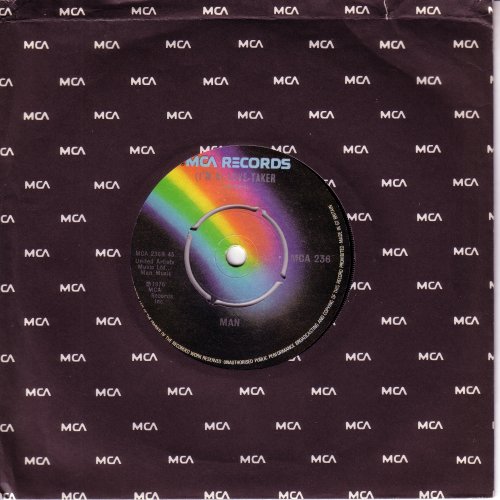
American. The Music Corporation of America was founded in 1924, as a booking agency, by Jules Stern. It proved successful and diversified, first into the field of artist management and then into television and films, again with great success. In 1962 it entered the record business with the purchase of the American Decca company, which included the Coral and Brunswick labels; it brought all three together in 1973, under the MCA name. More acquisitions followed: the ABC group in 1979; Chess in 1985; and Motown in 1988, though they sold the latter on in 1993. In 1995 MCA itself was bought, by the Seagram company. Seagram dropped the MCA name, and rebranded its whole concern as the Universal Music Group.
The actual MCA label appeared outside the USA several years before it debuted in its home country. In the UK the company initially licensed its product to our Decca for release on Coral or Brunswick, but 'Record Retailer' of the 24th of January 1968 was able to reveal that it would be launching an independent operation here the following month. Brian Brolly was to head the new UK arm; there were to be two labels, MCA and Uni (q.v.), and the first three singles were slated for release. A pressing and distribution deal had been signed with Decca / Selecta. 'RR' of the 12th of February added that MCA would do its own recording, administration and promotion; it also said that the first records on the MCA label were due for release that Friday, with Uni being launched later.
MCA got off to a flying start, with its first single, 'If I Only Had Time' b/w 'Now Is The Hour' by John Rowles (MU-1000; 2/68) hitting the No.3 spot in the Charts. Leapy Lee's 'Little Arrows' b/w 'Time Will Tell' (MU-1028; 7/68) went one better, and the company also dented the Top Twenty with Rowles's follow-up, 'Hush... Not A Word To Mary' b/w 'The Night We Called It A Day' (MU-1023; 6/68) and a reissue coupling two classic tracks by Bill Haley & His Comets, 'Rock Around The Clock' and 'Shake, Rattle And Roll' (MU-1013; 3/68). Life as an independent company seems to have brought its problems, nevertheless, and 'RR' of the 25th of June 1969 broke the news that after seventeen months on its own MCA was switching back to a licensing deal with Decca. Its Uni subsidiary was not included in the deal, however, and MCA intended to retain a certain amount of independence by acquiring and developing talent from that source. 'RR' of the 23rd of August was able to give some details of the new arrangements: from the 1st of October MCA's American product would be marketed and promoted by Decca, as well as manufactured and distributed, under a three-year deal. Its American back-catalogue would be included, but not any British recordings, such as those by Rowles and Lee; they would be handled by MCA's British office. The split resulted in the formation of a distinct label, MCA-U.K. (q.v.), which it had its own logo on the labels (2) and its own series of catalogue numbers, the MK-5000s. The main MCA label, which was regarded as 'MCA International', retained the MU-1000 series ('RR', 18th October 1969). In both cases stereo singles had an 'S' added to the end of the prefix. Several MCA MU-1000 singles including 'Little Arrows' were reissued on MCA-U.K. with MK-5000 numbers: 'RR' of the 6th of December listed MU-1000 (as MK-5011), MU-1064 (MK-5015) and MU-1086 (MK-5017), all of which were by John Rowles.
In the event the separation lasted only for a year. 'RR' of the 10th of October 1970 revealed that MCA would be reverting back to Decca on a full licensing deal 'as soon as possible', this time with British product and the Uni label being included. As there was now no need for a separate MCA-U.K. label it was dropped, but singles originating with MCA's UK office continued to be given MK-5000 numbers. The company continued to enjoy a decent number of hits throughout: American artists The Cuff Links, Jackie Wilson, The Chi-lites, and Cher - both solo and in partnership with Sonny - got into the Top Ten, and Tony Christie did the same for the UK arm. There were also lesser hits from the likes of Rick Nelson and Rock Candy. The arrangement with Decca worked well enough for 'Music Week' of the 19th of August 1972 to reveal that it had been extended until the end of 1973, but the hits dried up to a large extent during that period, and in the autumn of 1973 there came news that MCA was to move to EMI at the start of 1974. The company's UK office was to close, but it was to have its own division inside EMI, complete with promotional staff ('MW', 22nd September 173). The move took place, as reported in 'MW' of the 12th of January 1974. It was accompanied by changes of label design and catalogue numbers, as detailed below.
MCA appears to have found a second wind after the move to EMI, and it started registering Chart successes again. Some were fairly modest - singles by Cher, Marvin Hamlisch and Lou Christie made the Top 40 but not the Top 20 - but in the first year Bill Haley's 'Rock Around The Clock' reached the No.10 spot when reissued yet again, this time backed with 'Rip It Up' as well as 'Shake, Rattle And Roll' (MCA-128; 4/74), and an even more venerable frequently-reissued oldie, Bing Crosby's 'White Christmas' b/w 'God Rest Ye Merry Gentlemen' (MCA-111; 12/74), provided a seasonal No.5. The following year MCA registered its first No.1, in the unlikely shape of 'If' b/w 'You And Me Against The World' by Telly Savalas (MCA-174; 2/75); then Julie Covington added a second in 1976 with 'Another Suitcase In Another Hall' b/w 'Rainbow High' (MCA-260; 11/76), lifted from the hit Andrew Lloyd Webber / Tim Rice musical 'Evita'. Punk Rock rather passed MCA by, though they did put out two singles and an EP by Punk band London in 1977; the company showed more interest in Disco, and out of a reasonable number of releases they scored Top 20 hits courtesy of Rose Royce (twice) and Stargard. The range of MCA's catalogue was illustrated in the spring of 1979 when it enjoyed a No.8 hit with Gary Moore's 'Parisienne Walkways' b/w 'Fanatical Fascists' (MCA-419; 3/79) and a No.2 with 'Pop Muzik' b/w 'M Factor' by M (MCA-413; 3/79). In addition to its more mainstream acts the company had a very respectable roster of Country artists, but their sales seem to have been mainly in the area of albums.
As 'Music Week' of the 19th of July 1975 pointed out, MCA were at that time one of only two American majors to still have a licensing deal in this country (I would assume that the other was Motown, which was one of EMI's other licensed labels). The agreement with EMI must have been satisfactory enough, as it lasted into 1979. In January of that year, however, 'MW' revealed that when the current deal expired, at the start of July, MCA was going to have another crack at independence. Pressing, distribution and sales would be handled by CBS; a new label backed by MCA, 'Infinity' (q.v.) was to be launched through CBS immediately, as there didn't seem to be any point in it being added to the EMI stable for just five months. Accompanied by a jump in catalogue numbers - they ended at MCA-423 with EMI and started at MCA-502 with CBS - the move went ahead. MCA entered the new decade, and went beyond the scope of this site, standing successfully on its own two feet.
As can be seen from the scans, a variety of different label designs were used in the '60s and '70s. A swirly red-and-yellow label (1) was used for during the first independent period and thus can be found on MU-1000 series singles up to September 1969. A short-lived 'Soul Bag' series from 1969 had its own catalogue numbers - the BAG-0s - a blue-and-black version of the label (3), and an overprinted company sleeve (25). When the American part of MCA was licensed to Decca, in September 1969, the swirly label was replaced by a 'battle axe' design in two-tone blue for the American MU/MUS-1000s (4), but it continued to be used for British records in the MK-5000 series on MCA-U.K. (2). When MCA-U.K. rejoined its parent under Decca's wing, in September 1970, the British MK/MKS-5000 series singles were given red-and-yellow labels in the 'battle axe' design (5). There were a few exceptions: some singles appeared with plain light blue (8) or yellow (9, 10) labels, presumably due to a shortage of the usual type. A shortage would also explain why some hit singles can be found in both the red-and-yellow and two-tone blue labels - in addition to the appropriate red-and-yellow type Rock Candy's 'Remember' (MK-5069; 1971) boasts a two-tone-blue version with the MCA logo at 9 o'clock (6), which seems to be unique to it. A short-lived Country & Western series from 1969 had two-tone green labels (7).
In October 1971 a striking geometrical 'diamond' design (11) was introduced, which served for both series. Labels with a 'diamond' at the centre were already in use in many countries overseas, and according to 'RR' of the 23rd of October the British design was being changed in order to bring it into line with them - the overseas ones, however, tended to be more colourful than ours. The MK/MKS-5000 series was abandoned late in 1972 and the MU/MUS-1000 one was used for both American and British product. The 'diamond' label survived until May 1973, when it was replaced by a much simpler silver-on-black one (13). 'Music Week' of the 12th of May said that this was to match it to MCA's American label - MCA had been launched under its own name there in late 1972 - but that design was only used on the first few singles in the USA, and by the time it was introduced here it had already been replaced in its homeland. 'Billboard' of the 10th of February 1973 had remarked upon the change, and had said that the new American design was to feature a rainbow. To return briefly to the 'diamond' design: a couple of singles from February 1973, MUS-1182 and 1183, can be found with both the standard design and one related to it (12); the changeling, which resembled the labels that were used in Australia and New Zealand, seems to have been an experiment that failed. As noted above, the move to EMI brought about the replacement of the MU(S)-1000 numbers with MCA-100 ones; it also saw the introduction of a 'rainbow' design (14), which matched the type used in the States. This stayed basically unchanged after the switch to CBS in 1979 and thus saw out the decade; singles from the CBS period tended to have no dinking perforations (15), whereas the EMI ones generally had them.
Turning to the subject of demos, the one from the first period of independence were light blue (16). From August 1969 issue labels overprinted with a medium-sized 'A' and the appropriate text were used (17-21). EMI continued the practice, but the text changed (22); the same applied after the move to CBS, when 'NOT FOR SALE FOR PROMOTIONAL PURPOSES ONLY' became 'DEMO RECORD NOT FOR SALE' (24). EMI singles sometimes had a 'Factory Sample' sticker applied to them (24); these records may also have been used as demos. With regard to company sleeves, 'swirl' labelled singles came in an orange-and-white sleeve (25); for MCA-U.K. singles the logo was altered - see that page for an example - and, as stated above, sleeves for the 'Soul Bag' series were overprinted to that effect (26). 'Music Week' of the 12th of May 1973, commenting on the arrival of the silver-on-black label, said that there were plans to introduce sleeves with the company's logo on them, in line with what was already being done in other countries; but a sleeve in the 'in-house' Decca 'jagged spiral' design (27) seems to have already been in use for a couple of years. The 'rainbow' singles had black sleeves with multiple white 'MCA's on them (28); the reverse of the sleeve carried a credit to EMI or to CBS, depending which era they were from. The discography below only covers the 1970s, thank goodness.




Copyright 2006 Robert Lyons.

